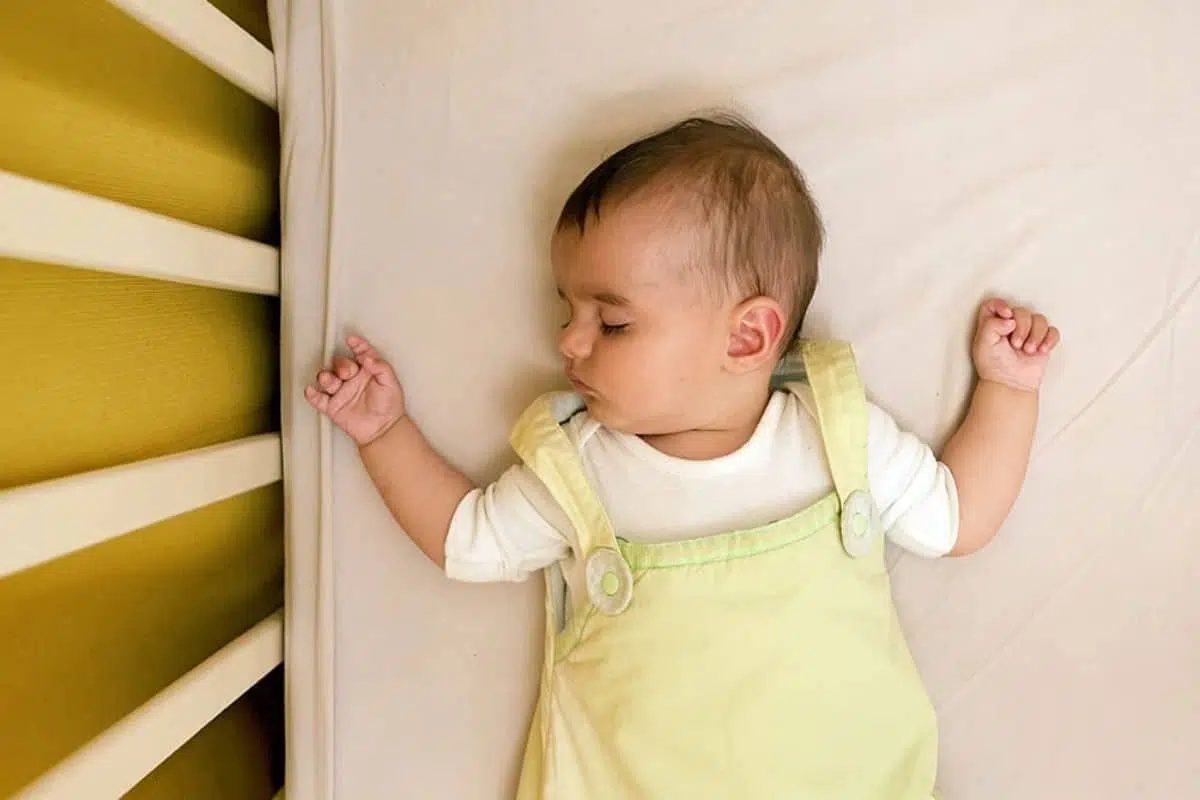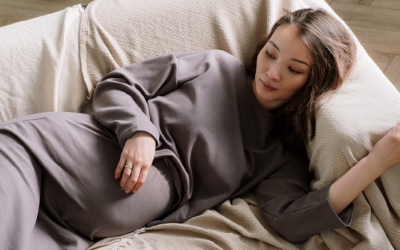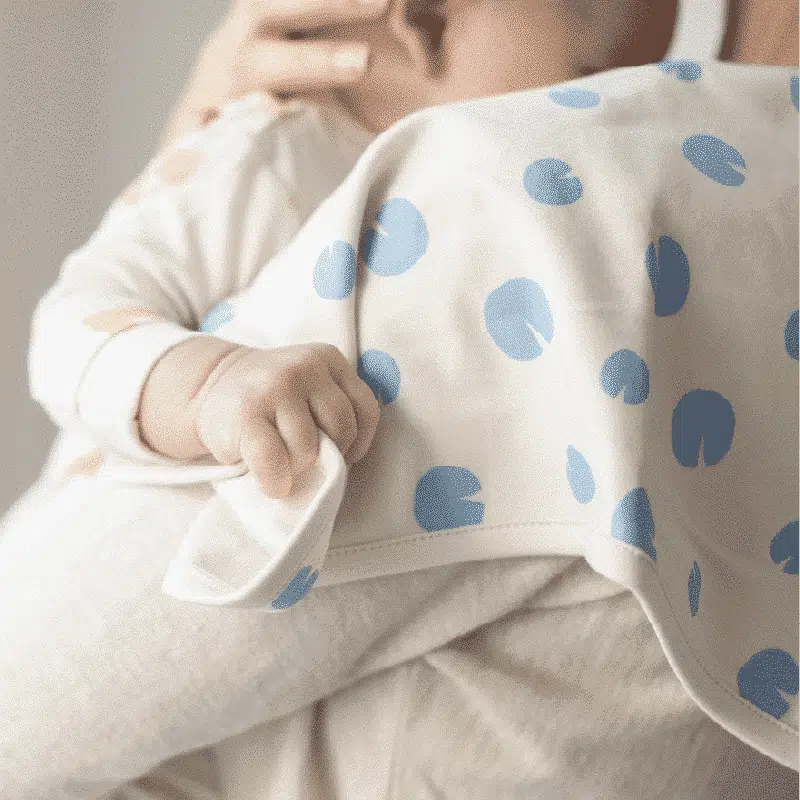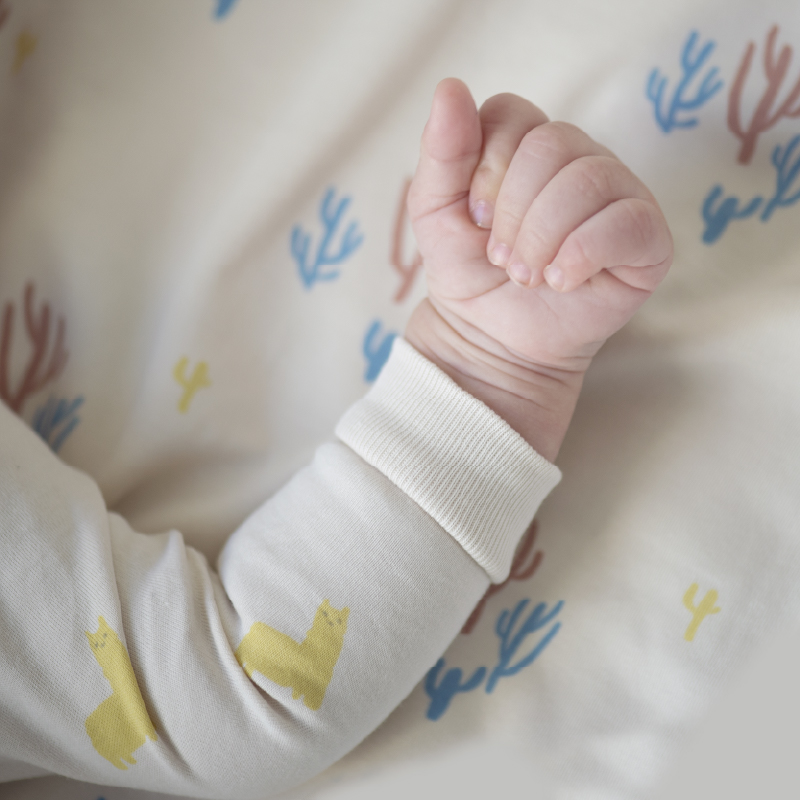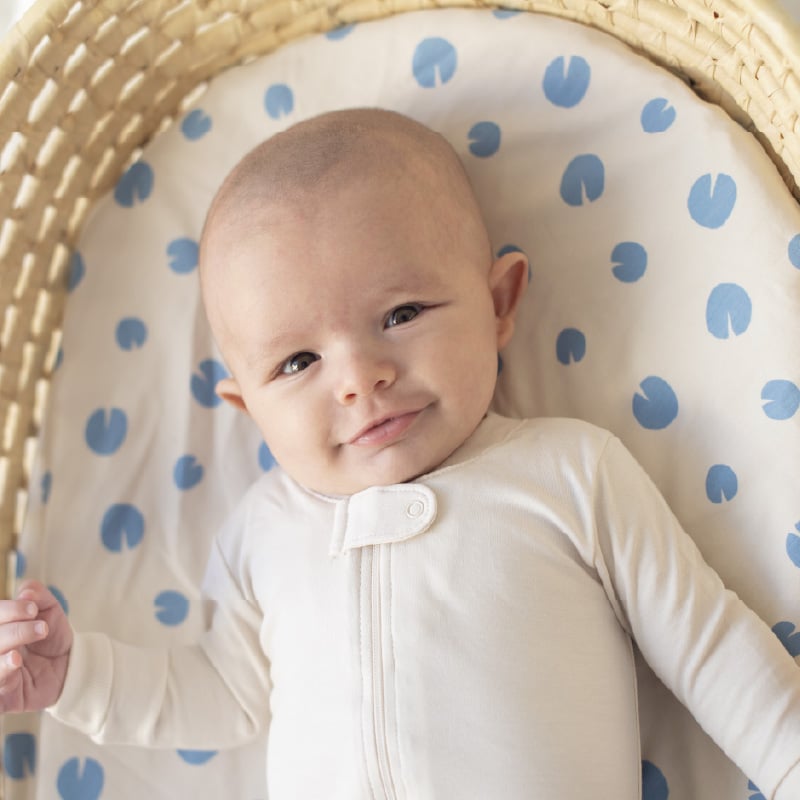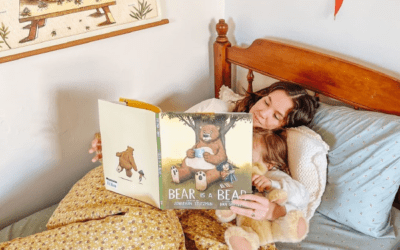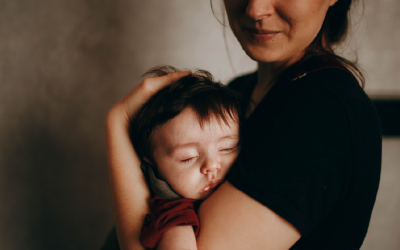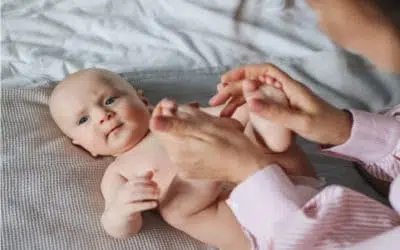When it comes to baby sleep safety, understanding the risks of SIDS (which stands for Sudden Infant Death Syndrome) is one of your most important jobs as a parent. And yet, there’s still so much we don’t know about it. What we do know, though, is that you can help reduce risk based on some of the scientific conditions that contribute to its cause. Read below to find out more.
Your Rockin’ Blinks Crib Sheet
- SIDS falls under the category of sudden unexpected infant death (SUID). SUID is the sudden death of a healthy baby under one year of age.
- Although the cause of SIDS is unknown, much of the research has focused on the way the brain arouses from sleep.
- The best way you can prevent SIDS is to follow the ABC’s of best safe sleep practices.
You love your baby so much that you would do anything to keep him or her safe. At the same time, you’re desperate to help your baby sleep because you know it’s best for them…and you! As scientists learn more about SIDS, it has become clear that following best safe sleep practices is the most important way to protect your baby, reduce your anxiety, and hopefully, help everyone get more sleep!
What is SIDS?
SIDS falls under the category of sudden unexpected infant death (SUID). SUID is the sudden death of a healthy baby under one year of age. This can include suffocation, strangulation, entrapment, infections, or other unexpected traumas. After an investigation has been completed, including autopsy, scene recreation, and clinical history, if a cause of death cannot be found, it is classified as SIDS.
How common is SIDS?
There are about 3,500 sudden unexpected infant deaths (SUID) in the United States annually. These deaths occur among infants less than 1 year old and have no immediate obvious cause. This represented about .09 percent of births in 2018. While SIDS occurrences are down by about half since the 1990s, thanks to wider adoption of safe sleep practices like “Back to Sleep,” the risk still exists.
How does SIDS happen?
Although the cause of SIDS is unknown, much of the research has focused on the way the brain arouses from sleep. As much as any parent wants their baby to sleep, there are also conditions where we would hope our baby would wake up.
- If there was smoke in the air or a blanket or stuffed animal was making it difficult to breathe, we would hope that your baby would wake up and cry for help.
- If your baby was lying in a position that made it difficult to take a full breath, we would want to know, or we would hope that your baby would awaken enough to adjust position to make breathing easier.
While this may seem straightforward, it involves a lot of communication within the brain. A baby has to take in external signals about what’s going on in the environment, plus internal signals that there is potential distress. The brain needs to evaluate whether these signals require a mild intervention, such as a deep sigh, or whether it demands crying in order to alert a caregiver’s help.
If awakening is required, the lower parts of the brain that regulate sleep need to send signals throughout the extended parts of the brain that control the various areas responsible for alertness. Essentially, there is a hierarchy of responses that determine whether the essential work going on during sleep should continue, or if waking up fully has become more necessary.[2]
This carefully orchestrated neural response is where the mystery behind SIDS may lie. Is there a particular pathway in the brain that fails to fire when breathing is compromised? This question means that understanding SIDS lies in the intersection of three domains: a vulnerable infant who for some unknown reason is unable to appropriately respond to the need to wake from sleep, a critical developmental period when these neural pathways are being established, and an outside stressor causing the need for the baby to wake.[3]
At what age are babies most at risk for SIDS?
Most SIDS cases happen between 2-4 months of age, but the risk is the highest during the first 6 months. SIDS risk decreases by about 12 months, with very few cases happening after that age
Are some babies more prone to SIDS than others?
Yes, some babies are at higher risk. Most SIDS deaths happen in babies 2 to 4 months old, and cases rise during cold weather. More boys will experience SIDS compared to girls by a slight margin. Black and Native American infants are more likely to die of SIDS than Caucasian infants.
Other possible risk groups include: premature babies, babies with low weight at birth, and babies born to mothers who smoked, drank or used drugs during pregnancy and after birth, mothers younger than 20. Other environmental SIDS risk factors include being around tobacco smoke after birth, poor prenatal care, and a family history of SIDS.
Are the baby sleep products marketing SIDS protection actually effective?
Do not rely on home monitors or commercial devices marketed as reducing the risk of SIDS. There is no evidence of these being preventative and the AAP advises against using home cardiorespiratory monitors as a strategy to reduce the risk of SIDS.
What can a parent do to protect against SIDS?
The easiest way to create a safe sleep environment is to remember your ABCs:
A Alone. The safest place for your baby is on his own flat, firm sleep surface.
B Back. Place your baby on his back for every night sleep and nap.
C Crib. Your baby’s crib, bassinet, or cradle should be free from crib bumpers, sleep positioners, toys, blankets, pillows, or any other loose bedding.
Rockin’BLINKS follows the guidelines of the American Academy of Pediatrics when it comes to safe sleep and the reduction of SIDS risk. You can find all of their recommendations here.
For more guidance on Safe Sleep Practices visit Rockin’Blinks Safe Sleep Library.
References
[1] Kochanek, K.D., Murphy, S.L., Xu, J.Q., & Arias, E. (2019). Deaths: Final data for 2017. National Vital Statistics Reports, 68(9). Hyattsville, MD: National Center for Health Statistics.
[2] Franco, P., Kato, I., Richardson, H. L., Yang, J. S. C. C., Montemitro, E., & Horne, R. S. C. C. (2010). Arousal from sleep mechanisms in infants. Sleep Medicine, 11(7), 603–614. Retrieved from http://www.sciencedirect.com/science/article/pii/S1389945710002224
[3] Guntheroth, W. G., & Spiers, P. S. (2002, November 1). The triple risk hypotheses in sudden infant death syndrome. Pediatrics, Vol. 110, p. e64. https://doi.org/10.1542/peds.110.5.e64
[4] Moon, R. Y. (2016). SIDS and Other Sleep-Related Infant Deaths: Evidence Base for 2016 Updated Recommendations for a Safe Infant Sleeping Environment. Pediatrics. Retrieved from http://pediatrics.aappublications.org/content/early/2016/10/20/peds.2016-2940.abstract
Good sleep is essential for a happy healthy childhood and life. Book a consultation with us now!
Subscribe to our Newsletter and get the latest in sales, sleep information and more

